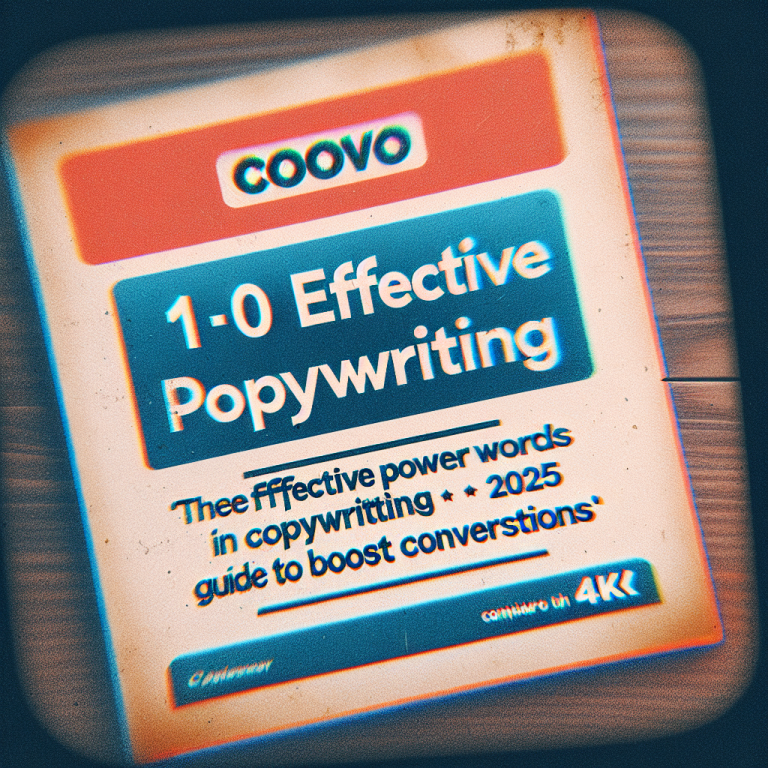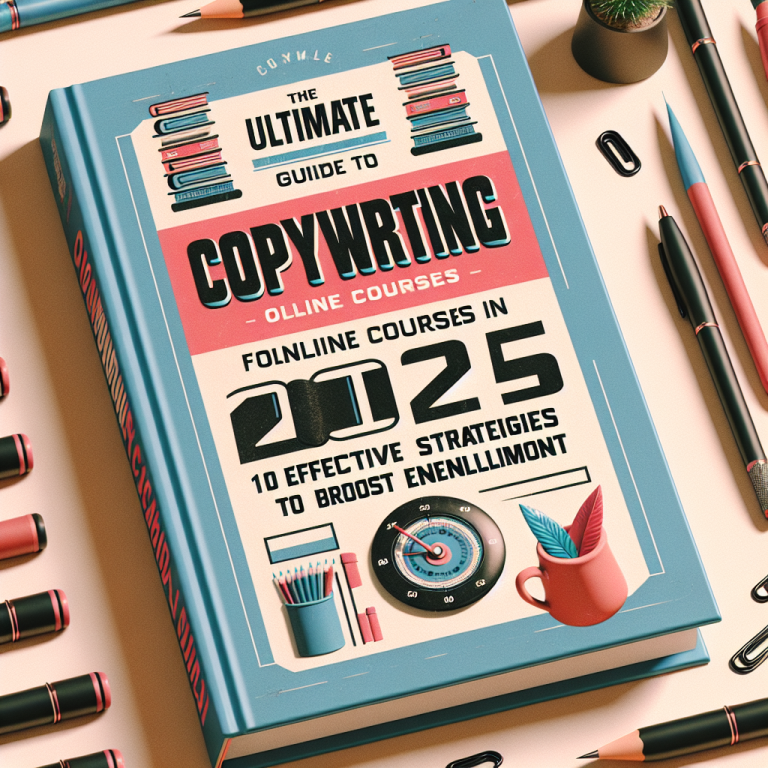10 Powerful Strategies for Emotional Intelligence in Copywriting (2025 Guide)
- 1. Understand Your Audienceâs Emotions
- 2. Use Empathy to Connect Deeply
- 3. Incorporate Emotional Triggers
- 4. Practice Active Listening and Reflection
- 5. Develop Self-Awareness in Your Writing
- 6. Tell Authentic, Relatable Stories
- 7. Use Tone and Language Effectively
- 8. Read and Analyze Emotional Responses
- 9. Build Trust Through Transparency
- 10. Continuously Improve Emotional Skills
1. Understand Your Audienceâs Emotions
Identifying Emotional Needs
To master emotional intelligence in copywriting, you must start by understanding what your audience feels and needs. Use data, surveys, and social listening to gauge their emotional states. In 2025, consumers expect brands to resonate on a deeper level, so tapping into their core feelings is key. For example, if your target audience feels anxious about financial security, your copy should acknowledge their concerns empathetically.
Empathy begins with active research. Look at reviews, comment sections, and social media conversations. These often reveal unspoken emotions and frustrations. Recognizing these feelings allows you to craft messages that genuinely connect, rather than just sell.
Remember: Emotional intelligence in copywriting isnât just about reactive words but understanding the underlying moods driving your audienceâs decisions. When you align your messaging with their emotional landscape, conversions tend to increase significantly.
Applying Emotional Insights
Once you’ve identified these key emotions, tailor your messaging accordingly. Highlight benefits that alleviate fears, evoke happiness, or inspire hope. A compelling example is a health app that emphasizes peace of mind rather than just features.
Use emotional insights to craft headlines, calls to action, and storytelling that resonate. In 2025, the most effective copy often incorporates emotional cues rooted in real audience feelings, creating an instant bond that drives action.
Tip: Regularly update your understanding of audience emotions through analytics and feedback loops. This ongoing process ensures your copy stays emotionally relevant.
2. Use Empathy to Connect Deeply
Empathy as a Core Skill
Empathy in copywriting means stepping into your audienceâs shoes to see the world from their perspective. This skill is more critical than ever in 2025, as consumers crave authentic connections. When your text reflects understanding and genuine concern, trust builds naturally.
For example, empathetic copy for a fertility clinic might acknowledge the emotional rollercoaster of trying to conceive, offering hope and reassurance rather than just medical facts.
Practicing empathy involves active listening and avoiding assumptions. Pay attention to the language your audience uses and mirror it in your writing. This alignment makes your message feel personal and relatable.
Practical Ways to Show Empathy
Use phrases like âWe understand how you feelâ or âItâs normal to worry aboutâ¦â to convey your understanding. Incorporate customer stories or testimonials that reflect shared emotions. These narratives foster a sense of community and trust.
Additionally, ensure your tone remains compassionate and non-judgmental. In 2025, consumers are quick to detect insincerityâauthentic empathy is rewarded with loyalty.
3. Incorporate Emotional Triggers
What Are Emotional Triggers?
Emotional triggers are specific words, images, or stories that evoke certain feelings in your audience. Effective copywriters in 2025 leverage these triggers to inspire actionâwhether itâs joy, fear, hope, or urgency.
For instance, scarcity (âLimited time offerâ) triggers fear of missing out (FOMO), while success stories trigger inspiration and hope. Knowing your audienceâs emotional triggers helps you craft compelling messages that move them closer to conversion.
Use data-driven insights to identify which triggers resonate best. Test small variations and analyze responses to refine your approach continually.
Embedding Triggers Responsibly
Itâs essential to use emotional triggers ethically. Manipulative tactics can backfire and damage your brand’s reputation. Instead, focus on highlighting genuine benefits and relatable scenarios.
For example, an eco-friendly brand might emphasize a sense of pride and responsibility, tapping into feelings of moral satisfaction. Responsible use of emotional triggers aligns your brand with core values, fostering trust and loyalty in 2025âs consumer landscape.
4. Practice Active Listening and Reflection
Listening to Your Audienceâs Voice
Active listening in copywriting involves analyzing comments, reviews, and social media posts to understand the emotional currents flowing through your audience. This practice helps you capture nuanced feelings that might not be obvious at first glance.
Reflecting these insights in your copy shows that you genuinely care. For example, if frequent complaints indicate frustration with a product feature, acknowledge this issue directly and offer solutions.
In 2025, data from AI-driven sentiment analysis tools enhances your ability to listen effectively and respond with tailored, emotionally intelligent messaging.
Reflecting Emotional Feedback
Use what you’ve learned to modify your messages continuously. Incorporate language that aligns with your audienceâs feelings. If people express excitement about a new product, craft stories that amplify that enthusiasm.
Never underestimate the power of empathyâsometimes, simply acknowledging someoneâs feelings can significantly boost engagement and trust.
5. Develop Self-Awareness in Your Writing
Understanding Your Emotional Biases
Self-awareness is crucial for emotionally intelligent copywriting. Recognize how your own biases or emotions influence your message. If youâre passionate about a product, avoid overhyping in ways that could seem insincere.
In 2025, emotional intelligence includes regulating personal feelings to maintain objective, empathetic communication. Take time to reflect on your writing and ensure authenticity.
Practice journaling or seek feedback from colleagues to uncover unconscious biases that might color your messaging.
Aligning Personal and Audience Emotions
Balancing your emotional perspective with that of your audience leads to more genuine copy. When you understand your emotions and those of your audience, you can craft messages that resonate on a deeper level.
This balance helps prevent a disconnect, ensuring your copy is relatable and trustworthy. Remember, emotional intelligence in copywriting is a two-way streetâyour feelings matter as much as your audienceâs.
6. Tell Authentic, Relatable Stories
The Power of Storytelling
Stories evoke emotions because they mirror real-life experiences. In 2025, storytelling remains one of the most powerful tools in emotional intelligence in copywriting.
Share authentic customer journeys or personal anecdotes that highlight emotional struggles and triumphs. This vulnerability fosters trust and empathy, leading to stronger brand loyalty.
For example, a non-profit might share survivor stories that inspire hope and motivate action, emphasizing genuine emotional connection over sales pitches.
Structuring Compelling Stories
Use a clear narrative arcâproblem, struggle, resolutionâto guide your storytelling. Incorporate emotional triggers naturally within this framework, making stories memorable and impactful.
Keep stories relatable by using conversational language and sensory details. Emotional resonance is amplified when your audience sees their own experiences reflected in your stories.
7. Use Tone and Language Effectively
Adapting Tone for Emotional Impact
The tone of your copy can make or break emotional engagement. In 2025, adaptable toneâwhether empathetic, enthusiastic, reassuring, or urgentâhelps align your message with your audienceâs emotional state.
Pay attention to word choice, sentence structure, and punctuation. A cheerful tone might use exclamation marks, while a comforting tone relies on gentle language.
Test different tones to see what resonates. The right tone fosters emotional bonds that encourage conversions and brand loyalty.
Language That Connects
Use language that mirrors your audienceâs vocabulary and emotional language. Incorporate power words and emotive phrases carefully to motivate and inspire action.
In 2025, AI-powered copy tools assist in choosing the most emotionally charged words for your target demographic, making your copy more persuasive and genuine.
8. Read and Analyze Emotional Responses
Measuring Emotional Engagement
Tax your copyâs emotional effectiveness by analyzing engagement metricsâclick-through rates, time spent on page, comment sentiment, etc. Advanced tools in 2025 enable precise emotion tracking.
Look for patterns that indicate emotional engagement. For example, high comment volumes with positive sentiment suggest your copy resonates emotionally.
Refine your strategies based on these insights to continually enhance emotional intelligence in your copywriting.
Adapting Based on Feedback
Feedback loops are essentialâadapt your tone, messaging, and triggers based on real reactions. Donât hesitate to experiment and iterate, staying flexible in emotional communication.
By being attentive to emotional responses, you become a more empathetic and effective copywriter, building stronger connections with your audience over time.
9. Build Trust Through Transparency
Honest Communication Matters
Transparency breeds trust, which is fundamental in leveraging emotional intelligence in copywriting. Be open about your productâs limitations, pricing, and policies.
This honesty shows respect for your audienceâs intelligence and emotional well-being. For instance, clearly explaining policies during a return process reduces anxiety and builds loyalty.
Todayâs consumers in 2025 appreciate brands that communicate openly, fostering emotional bonds that stand the test of time.
Sharing Your Brand Values
Express your mission and values consistently. When your messaging aligns with core principles like sustainability or social responsibility, emotional connections deepen.
This authenticity is especially vital in 2025, where consumers are increasingly driven by ethical considerations.
10. Continuously Improve Emotional Skills
Invest in Emotional Intelligence Development
Emotional intelligence isnât static. Commit to ongoing learningâtake courses, attend webinars, and read the latest research. In 2025, emotional skills are as vital as technical copywriting skills.
Practice mindfulness and self-reflection regularly. These habits help you stay attuned to your own emotions, improving your ability to empathize and connect.
By sharpening your emotional intelligence in copywriting, youâll craft more compelling, relatable content that resonates deeply with your audience.
Seek Feedback and Mentorship
Engage with peers or mentors who can provide insight into your emotional effectiveness. Constructive feedback is invaluable for growth.
Implement lessons learned, experiment with new techniques, and monitor results. This iterative process keeps your skills sharp and relevant in the rapidly evolving world of 2025 copywriting.
Frequently Asked Questions
Q1: How does emotional intelligence in copywriting improve conversions?
Emotionally intelligent copy connects with your audience on a personal level, fostering trust and loyalty. When your messaging resonates emotionally, readers are more likely to take action, boosting conversions.
Q2: Can emotional intelligence in copywriting help my brand stand out?
Absolutely. In a crowded market, brands that genuinely understand and address customer emotions differentiate themselves. Authentic emotional connection builds lasting loyalty and brand advocacy.
Q3: What are some practical tips to develop emotional intelligence in copywriting?
Focus on active listening, empathy, storytelling, and self-awareness. Regularly analyze audience responses and adapt your tone and messaging accordingly.
Q4: How important is transparency in emotional copywriting?
Transparency builds trust, a cornerstone of emotional intelligence. Honest communication about products, policies, and values makes consumers feel respected and valued.
Q5: Where can I learn more about emotional intelligence in copywriting?
Look for specialized courses, industry webinars, and reputable blogs focusing on emotional intelligence, marketing psychology, and storytelling techniques.
Conclusion
As we navigate 2025, mastering emotional intelligence in copywriting is more vital than ever. From understanding your audienceâs feelings to telling authentic stories, these strategies enable you to forge genuine connections that inspire action. Remember, emotionally intelligent copy not only boosts sales but also builds long-term trust and loyalty. Invest in developing your emotional skills and stay attuned to the evolving emotional landscape of your audienceâyour success depends on it.







